Who’s going to the GAMES?
by Christopher Hector
Glancing down the list of showjumping horses entered on the first long lists for the Olympic Games at Rio, I was tempted to stop at the first country – A is for Argentina. It looked to me that this group was very close to what I was going to find when I worked my way through all the whole list… and that feeling was pretty much right.
The Argentinians have eight horses listed, two by Cornet Obolensky (Clinton / Heartbreaker), one by Cardento (Capitol / Lord), one by Clinton (Corrado I / Musetto), one by Indoctro (Capitol / Caletto II), one by Winningmood , the Darco (Lugano van la Roche / Codex), son, out of a Cassini I mare, and one by the Quidam de Revel (Jalisco / Nankin) son, Guidam (Venutard).
All they really needed was a For Pleasure (Furioso II / Grannus), since he was the most represented stallion on the Rio list, with nine of his progeny – and with three of his sons, For Keeps (Graphit), For Feeling (Monaco) and Forsyth (Dorian) each with one rep.
The stallion with the most progeny entered for the Games – For Pleasure
There were two stallions with eight: Cardento and Cornet Obolensky. Three with six: Balou du Rouet (Baloubet du Rouet / Continue), Diamant de Sémilly (Le Tot de Sémilly / Elf III) and Indoctro. Another three with five: Baloubet du Rouet (Galoubet A / Starter), Cassini I (Capitol / Caletto II) and Kannan (Voltaire / Nimmerdor).
Four stallions each produced four progeny listed for Rio: Colman (Carthago / Lord), Contender (Calypso II / Ramiro), Kashmir van Schuttershoeve (Nabab de Rêve / Tenor Manciais) and Thunder van de Zuuthoeve (Argentinus / Nimmerdor).
Seven horses produced three progeny each: Quincy (aka Quaprice du Bois Margot – Quidam de Revel / Lord), Vigo de Arsouillles (Nabab de Rêve / Fleuri du Manoir), Quick Star (Galoubet A / Nithard), Quidam de Revel (Jalisco / Nankin), Nabab de Rêve (Quidam de Revel / Artichaut), Casall (Caretino / Lavall I) and Heartbreaker (Nimmerdor / Silvano).
Looking at the dam sires we find that breeding marvel, Heartbreaker, at the head of the list with seven of his mares featuring on the Games entries. Two more legends are there with six, Darco and Carthago (Capitol / Calando I). And yet again, we are reminded of the key rôle the Nijhof family have played in jumping breeding, with Heartbreaker’s stable-mate, Calvados (aka Sable Rose – Uriel / Ibrahim) providing 4 – as have Cento (Capitol / Caletto II) and Nabab.
There are eight stallions with three broodmares each: Cardento, Quidam de Revel, Voltaire (Furioso II / Gotthard), Contender, Indoctro, the last great Thoroughbred jumping stallion, Laudanum (Boran / Montaval) and Cavalier (Maykel /Othos). One of the two famous Westfalen ‘P’s, Polydor (Pilatus / Fruhlicht I) also has three, with the other P, Pilot (Pilatus / Graphit) is down to two (including the newest star on the international horizon Corbinian), although I am prepared to bet that if you chased the dam lines, you’d find more Pilot mares in the mix…
THE STUDBOOKS
Although given the way in which the breed associations now happily share bloodlines, counting the brands can be misleading, there is no disguising just how successful the Belgian breeders in the BWP have been – with an astonishing 35, just seven horses behind the Dutch KWPN with a much much larger mare base. The Dutch have 42 listed for Rio.
If the three studbooks of Belgium, BWP, sBs (11 for Rio) and Zangersheide with 14, could actually resolve petty rivalries and become one studbook, they would have 60 representatives on the list which would be just two less than the combined total of the mighty German books: Holstein (25), Hanoverian (11), OS (Oldenburg Jumping) – 10, Westfalen – 10 and the traditional Oldenburg book, six.
The AES book has six while that once mighty jumping force from Ireland, has shrunk to two.
The Breeders
Paul Schockemöhle dominates the jumping breeding, with ten of his horses (all branded ‘OS’ the Jumping Oldenburg book Paul played a key rôle in establishing) and before you say, mega rich guy, 1500 broodmares, ho hum, think again.
Paul Schockemöhle’s breeding operations started in 1974 when the brothers Alwin, Paul and Werner decided to purchase stallions to stand at their parents’ farm in Mühlen. Breeding has always been a tradition with the Schockemöhle family, father Alois and grandfather Alwin had owned stallions before. And while he might have the largest brood mare band the world of sporthorse breeding has ever seen, he is a real horseman. Alois Pollmann-Schweckhorst rode for Paul for many years, and discussing the success of Chacco-Blue, Alois told me:
“Paul Schockemöhle used him a lot because he realized very soon how to find the right mares for him. In his opinion Chacco-Blue fitted to a lot of his mares, he has around 1000 mares but he knows every brood mare by name. If you say one name of a mare, he says, yes, the grandmother of this mare, I bought from Hartwig Stenkin, or Alwin Schockemöhle in 1970…. She is related to this horse and this horse. That is a knowledge that no-one else has, and then it comes, maybe by intuition, that Chacco-Blue fits this mare. He has the best experience, and the best success.”
The only other breeder with more than two horses on the list, is the Dutchman, Cees Klaver with three. Cees certainly worked his way up in the horse business from modest beginnings, starting his equestrian career with a riding school that he opened when he was eighteen years old.
“It started with a pasture where I set up an arena with rope fencing and borrowed horses from farmers in the neighbourhood to use for lessons. I also provided refreshments, and that’s how it got off the ground. In those days, riding was truly a luxury, and people could ride at my place for five guilders an hour, a very low price…” Mr Klaver told Jenneke Smit (Cees Klaver: Success through his own vision, KWPN International 1/2013).
The riding school grew and so did Cees’ ambitions, he started giving some of his horses to top jumping riders like Sven Harmsen, Henk van de Pol, Rob Ehrens, Albert Voorn and Nathalie van der Mei, to campaign for him, and when some of the mares came back to him after their careers finished, he became interested in breeding, and eventually sold the riding school, and established Stal Klaver, with the aim of breeding jumpers, and the business grew and grew. In April 2014, the seventy-year-old Mr Klaver announced that he was auctioning 59 of his 200 horses and cutting back a little on his activities.
Along the way, he bred two of the more famous stallions of modern times, Taloubet and Big Star. It’s no coincidence that the two descend from the great French stallion, Almé: “I use good mares out of proven lines and pair them mainly with proven sires. They have to be elastic horses with lots of scope, ‘blood’ and intelligence. I never use Thoroughbreds to get that ‘blood’ in the horses; instead, I use stallions that pass on ‘fiery’ characters like those with Animo and Almé blood.”
Sure enough, Mr Klaver’s entries for Rio are an alchemy of French, Dutch and German blood: Big Star (50:50 Dutch/Selle Français), Talboubet (50% Selle Français, 50% Westfalien) and Taloubetdarco K Z (1/4 SF, 1/4 Westfalien, 1/8 Dutch, and 3/8 Belgian).
The Dressage Horses
Photo – Jacques Toffi
There are no prizes for guessing that the dominant dressage sire at these Championships, is once again Donnerhall (Donnerwetter / Markus), and little surprise that this domination is largely due to his son, De Niro (Akzent II) for while Donnerhall himself has only two representatives, De Niro has 10, two more than the next best represented sire, Gribaldi (Kostalany / Ibikus). Not only does Gribaldi have eight of his own, his son, Painted Black (Ferro) is the sire of two more.
Donnerhall’s best son – De Niro
Donnerhall is represented by seven sons on the Rio list, aside from De Niro, there’s Diamond Hit (Ramino, he’s a half brother to Sandro Hit) with four, Don Cardinale (Feinbrand) and Don Schufro (Pik Bube I), each with two, and three with one each: Don Primero (Pik Bube I), Dr Doolittle (Lauries Crusador xx) and Dressage Royal (Rubinstein).
There are nine grand sons, two with two each – Don Ruto (Don Gregory / Rubinstein) and Dimaggio (Don Primero / World Cup I), the rest with one each: D-Day (Donnerschwee / Welt As), Danone (De Niro / Weltmeyer), Di Versace (Davignon / Matcho aa), Don Davidoff (Don Gregory / Rubinstein), Don Larino (Don Primero / Larinero), Du Moulin (Davignon / Weltmeyer) and Son de Niro (De Niro / Balzflug).
The leading Dutch sire, Jazz (Cocktail / Ulster), has six representatives. His grandson, UB40 (Olivi / Michelangelo) has one.
Sandro Hit (Sandro Song / Ramino) has five representatives, his son, Sir Donnerhall (Donnerhall) has two, while two other sons, Sandreo (Flemmingh) and Stedinger (Landadel), each have one.
Representing Sandro Hit – Showtime (Photo – Kenneth Bradddick)
Once upon a time there was fierce rivalry between the D(onnerhall), R(ubinstein) and W(eltmeyer) fans, each boasting the superiority of ‘their’ sire. The ‘D’ fans would seem to have emerged triumphant from that battle, with the ‘R’ fans just hanging in there, thanks largely to Rubinstein’s grand son, Rubin Royal (Rohdiamant / Grundstein II) with four representatives. There are five own sons of Rubinstein (Rosenkavalier / Angelo), each with one representative on the Rio lists: River Dance (Ataturk), Rosentau (Noble Roi xx), Rotspon (Argentan I), Rubinstern Noir (Marvin) OO Seven (Doruto) and Rohdiamant (Inschallah). There are two more representatives by Rubinstein’s grand sons: Riccione (Regazzoni / Arogno), Romanov (Rohdiamant / Grundstein II – a full brother to Rubin Royal) and one by the great grand son, Royal Hit (Rohdiamant / Ramino – yes, he is another half brother of Sandro Hit).
Alas if the R contribution is somewhat modest, the W bid for supremacy has all but disappeared. There is one by Weltmeyer (World Cup I / Absatz), one each by his sons, Welt Hit II (Hill Hawk xx) and Wolkenstein II (Wendekreis) and one by his son, Waterford (Matcho aa).
It can’t be said that Donnerhall’s triumph in the battle of the big three was due to any unfair advantage when it came to his book – sure he was brilliantly promoted at Gronwöldhof, and with Mrs Rehbein, was one of the first stallion stars to follow Gaspari’s lead to promote himself in the competition arena – but Mrs Vorwerk was no slouch when it came to promotion, and Rubinstein was the beneficiary of the loyal band of mare owners attached to the Vorwerk Stud, while Dr Bade at Celle, kick-started Weltmeyer’s career with a book of the best 200 mares in Hanover in his first season and relentlessly promoted him to the Hanoverian breeders…
Dressage Broodmare Sires
Once again it is Donnerhall with four mares. For me it is a puzzle, Donnerhall’s breeding is nothing special, Donnerwetter was an ugly creature that went to the USA, his dam sire is the half-blood, Markus, who seems to have left no trace, and only on the bottom line, do we find the Anglo Arab import to Oldenburg, Condor, who is found on a few interesting pedigrees. On paper, both Weltmeyer and Rubinstein seem to have way more depth.
Mrs Rehbein who rode Donnerhall throughout his career, told me that none of his full brothers were any good: “Look at Donnerhall’s full-brothers, you couldn’t compare any of them to him. In appearance, in everything about him, the full brothers don’t come anywhere near Donnerhall. There were even two brothers who competed Grand Prix, but they were nothing compared to Donnerhall. They don’t even look the same, don’t move one little bit the same.” Yet, good horses tend to come from good families… curious but no denying that there he is dominating the Rio list as he has done at the last half dozen major Championships.
There are three stallions with three mares each, including the Donnerhall son, Don Schufro, Rubinstein, and Contango (Contender / Kronprinz xx), another marvel, but this time, one that was not appreciated in Europe and ended up as a very important sire in the USA.
Johan Hamminga rode Contango in his stallion test: “When Contango came to Holland I rode him in the test. He was a very well built horse, a lot of balance – all in proportion: forehand, middle, back end, and the wither was ten centimetres higher than the croup! He had a long neck and the neck came out of wither with a lot of uphill tendency. He went on the vertical very easily. When you rode the horse, he was sensitive. When you looked at the horse you might say, oh he is a big one, but when you sat on the horse, he was sensitive to your legs and gave you a very good feeling. Contango was before his time in Holland – now we have more ‘blood’ in the mares and you see a lot of children of Contango in Holland. Everyone wants to Contango in the dam line because they have very high rideability, they can collect very easily, and they have a lot of potential for Grand Prix, and that’s what we like from Contango. Now everyone says Contango, Contango, but we had him 20 years ago…”
The Studbooks
The Dutch were the first to deliberately stream their breeding program in two directions, dressage and jumping, and it certainly seems to have worked for them, because with 46 representatives on the Rio list, they are far-and-away the most influential studbook.
The Oldenburg book has always prided itself on being quick to spot the trend and they have a healthy team of 18 in the lists, one suspects largely due to the influence of Sandro Hit – although there are some, even in Oldenburg, who feel that this may have come at a cost to the long term gene pool…
The trend setters of dressage breeding for so many years, the Hanoverians, have to settle for third with 15 reps – although we should note that many of the horses on this list will not actually be selected to represent their country at Rio, and the more interesting figures will come when we look at the top 20 after the Grand Prix.
The Danes too have entered the dressage market with a bang, eclipsing their erstwhile big brother and mentor, Sweden, and they are well represented with 12.
There is not much of note in the Breeders column, the only one with more than one horse is the ubiquitous Paul Schockemöhle with two.
Eventing
Once upon a time, the eventing breeding lists were a sad joke, with ‘unknown’ dominating the pedigrees, and the ‘experts’ shaking their heads, you can’t breed an eventer, they are accidents… The truth is quite the reverse, and the very small number of breeders who have deliberately set out to breed eventers have had startling success, sometimes on the basis of a fairly indifferent genetic base. And the pedigrees are starting to be filled with names, recognizable names of horses that are proving themselves as eventing sires for what has become an emerging and lucrative market.
Although it must be said that the Rio list is a bit more random than we have been used to in major eventing championships of recent years. For a start, there is not one entry by the great Heraldik xx, or Cavalier Royale, although there are two by their great rival, Master Imp xx.
Perhaps due to the dispute between Andrew Nicholson and his Equestrian Federation, not only is there no Andrew in the Kiwi squad, but there is only one entry by the Thoroughbred, Fines, who has been the sire of so many of the Beca horses that Andrew has starred on. The Italian Giovanni Ugolotti is entered on Oplitas, who is by Fines xx, and out of the Golf I mare, Berganza, the dam of Armada and Nereo, and sure enough, Andrew started Oplitas. There is also on entrant by Fines’ Anglo Arab son, Nino.
One of three by Courage II – Ringwood Sky Boy
The stallion with the most entries – three – Courage II, is a horse of impeccable Holsteiner breeding, being by Capitol out of a Cor de la Bryère / Liguster mare. He is out of Vamara, the full-sister to Cavalier Royale, another Holsteiner that starred as a sire in Ireland. Courage II stood at Kedrah House, for several seasons until his death in 2006. Kedrah is run by one of the open-minded visionaries of Irish breeding, Tom Meagher. It was Tom who imported the great Lux Z to Ireland, explaining the decision to Sally Parkyn in the September 2008 edition of Breeding News:
“At that time, we needed European, we needed the step and the jumping ability. I think our (Irish) studbook had their eyes closed for ten years. Hence we have to provide a European outcrop. Clearly, the type changed in Europe. When we were breeding from our own, we were getting the plainer Irish horse without the step and without the scope. The technique was still there, but the breed had gone a little plain and we had lost what the market required. The only way we could improve that was to import the bloodlines. We don’t invent the wheel again, it was working in France, it was working in Holland, therefore we have to go for the best. However we still have to keep our ‘Irishness’, that fifth leg, that sober mind, and that rideability.”
Courage II – with the most entries in the eventing…
And here’s his son Tom Bombadill Too
Tom Meagher also stands Ricardo Z (Rebell II Z – Ratina’s full-brother / Furioso II) who is the sire of two Rio entries. Another Zangersheide product, Cevin Z (Coriall Z / Carthago), who stands at The Billy Stud in the UK, produced two.
The Swedish international showjumping star, Feliciano (Irco Marco / Utrillo) and French showjumper, Iolisco de Quinton (Olisco / Quinhon d’Orouet) both produced two.
There are even two by Vigo d’Arsouilles (Nabab de Rêve / Fleuri du Manoir), and another by Shindler de Muze (For Pleasure / Latano) but like the Nicholson/Beca chemistry, all three are ridden by the amazing Karin Donckers, and all three bred by the most successful breeder of jumping horses in the world, Joris de Brabander, and I’m guessing that Joris could breed world champion five gaited Icelandic ponies if he put his mind to it. As it is, the eventers are a fun sideshow to his serious business of producing international showjumpers, so it is somewhat ironic, that Joris has only one in the showjumping list, albeit a pretty flash one, London…
Contendro I (Contender / Reichsgraf) is shaping as a good sire of eventers, which is surprising on paper, since with three crosses of Ramiro, you would think he would be way too heavy. He has two in the list.
When I first looked at the FEI Rio list there were a staggering 41 horses with ‘Unkown’ breeding, and no Thoroughbreds on the list. It took me a couple of hours and the assistance of reliable data bases like Horse Telex and Sport Horse Database, to end up with a rather different looking list.
The leading studbook is still the Irish, with 24, followed by Thoroughbreds with 17 and Selle Français with 16, bearing in mind that both the Irish and the Selle Français contingents are rich in Thoroughbred blood. This failure by the FEI to recognize the Thoroughbred is perhaps the echo of some very wooly thinking that was around the WBFSH in its early days. Thoroughbreds were not bred for sport, the ‘reasoning’ went, therefore we should not recognize the book. Hello, the Thoroughbred Studbook is an international model of what a studbook should be, and Thoroughbred blood is literally the life blood of the modern Sporthorse, without it, the horses of the majority of the members of the WBFSH would still have feet like dinner plates, feathers on their legs, fit only to pull a plough.
In truth nine of the Irish contingent are by Thoroughbreds, and 17 of them out of mares by Thoroughbreds.
Looking at the 173 eventing entries for Rio we find 36 are by Thoroughbred sires, and 61 out of mares by Thoroughbreds.
The Holsteiners have of late been looking with interest at the new market, and the lighter, ‘bloodier’ style of Holstein horse suits the sport well, there are 10 entered for Rio, but I suspect more in the wings.
Then the Hanoverians, with nine, and the KWPN and the Anglo Arabs on eight. Two books with six, Westfalia and BWP, and four with five: AES, DSP, Oldenburg and SWB.
Again, it will be intriguing to see how the list evolves when the real thing starts to take its toll in Brazil.
The Breeders
Fairnet and Linda – another triumph for Margareta Algotsson
The Rio list is once more a triumph for Swedish breeder, Margareta Algotsson, who not only produced two of the world’s top eventing riders, Linda and Sara (now Algotsson-Ostholt) but she is also arguably the most successful breeder of eventing horses in the world. At the London Games, Sara took home a silver medal on Wega, while her sister rode, Wega’s dam, La Fair.
This time Margareta has two progeny of Fairlisia in the lists, Fairnando (by Cardento) and Fairnet (by Feliciano), both ridden by Linda. Fairlisia is out of Princess Fair, by the Thoroughbred, Dalby Jaguar. Princess Fair, who is by the Thoroughbred Prince Fair, out of a mare by the Thoroughbred, Cosmos, produced ten foals for Ms Algotsson, including the most successful Swedish eventer of them all, Stand by Me, who took Linda to World Cup victory, as well as starring in the WEG, the Games and the Euro Champs, as well as La Fair… It is perfectly possible to breed eventers if you put your mind to it.

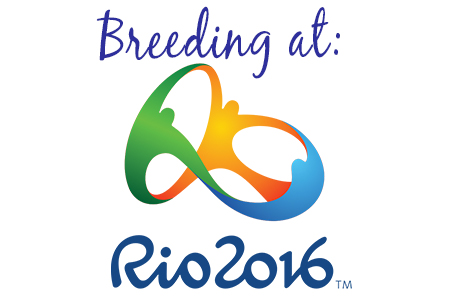
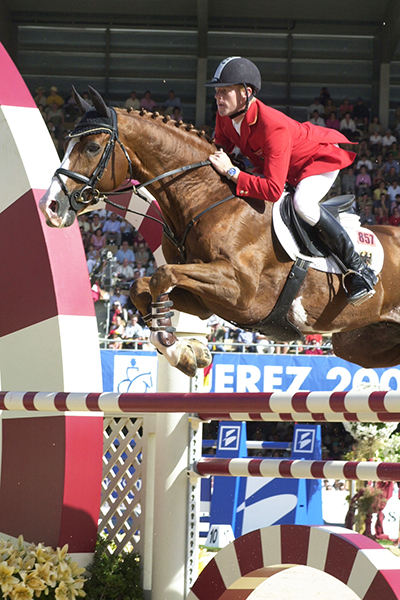
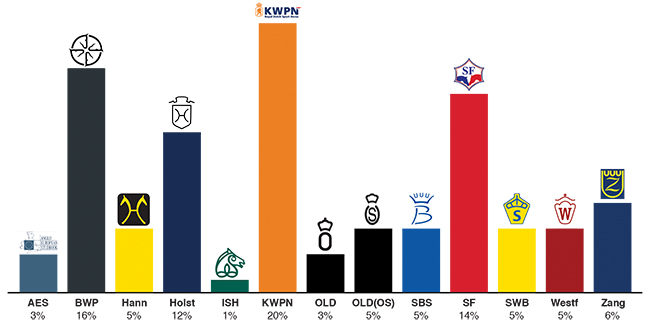
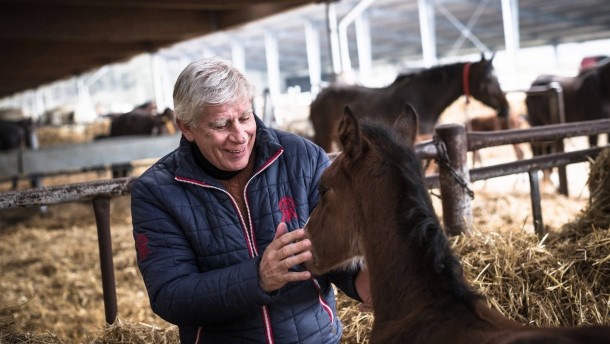
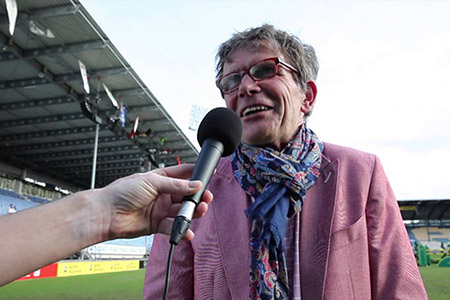
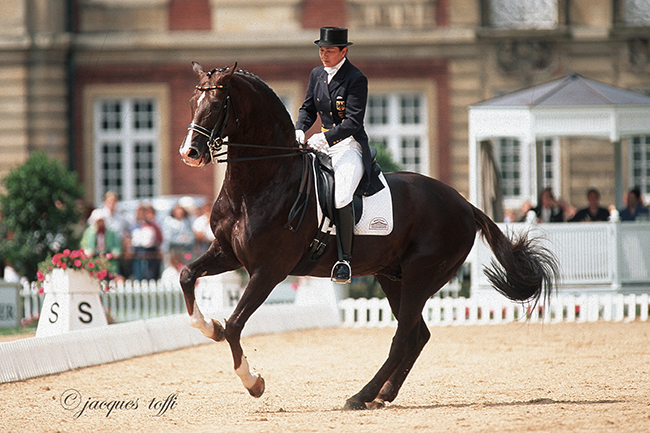
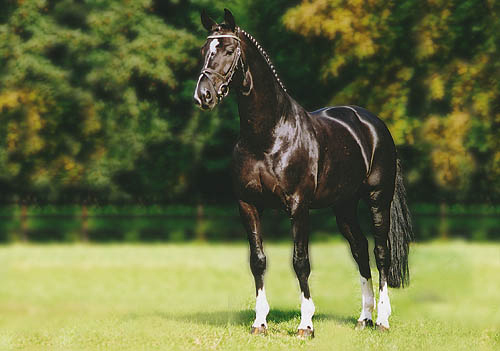
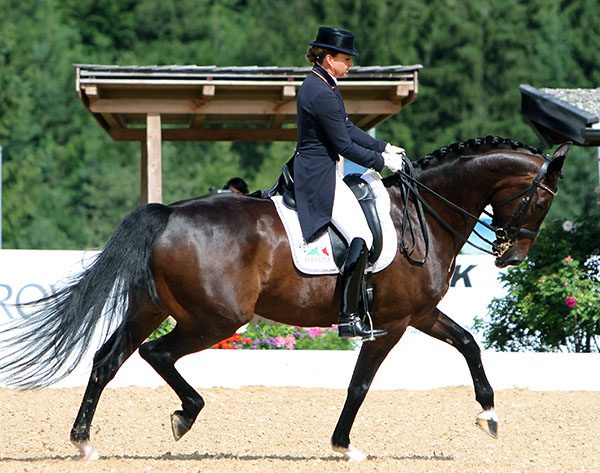
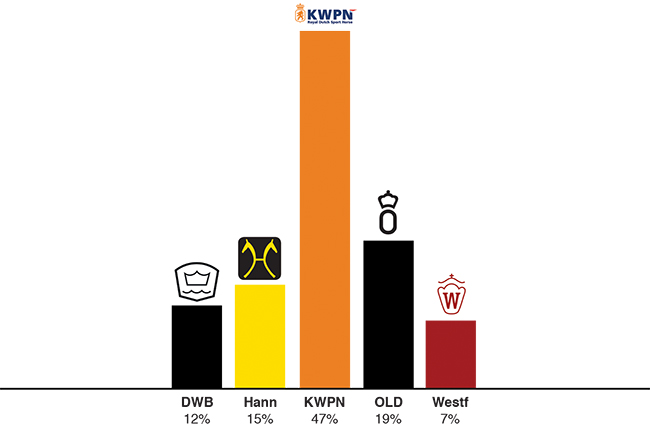
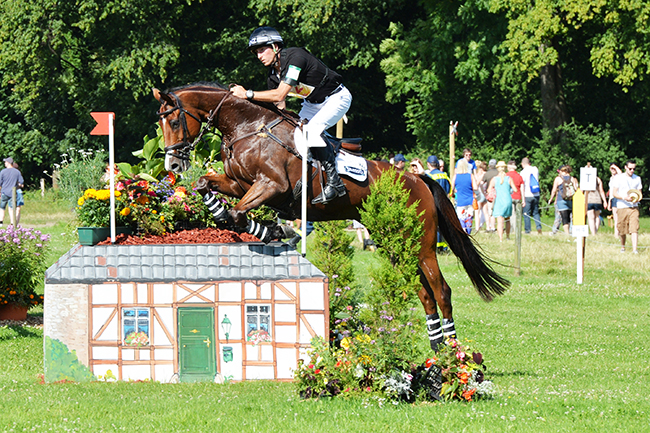
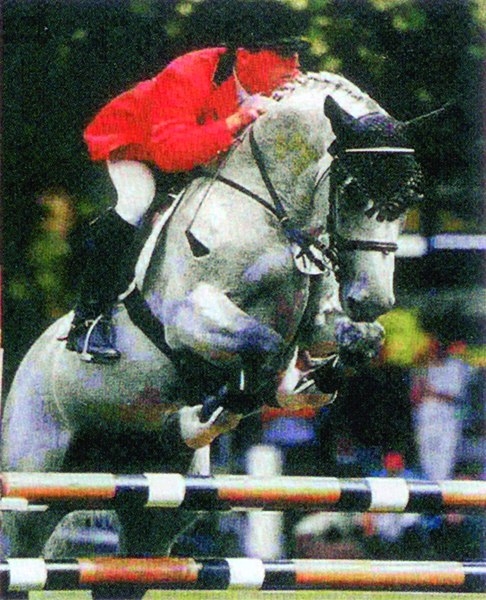
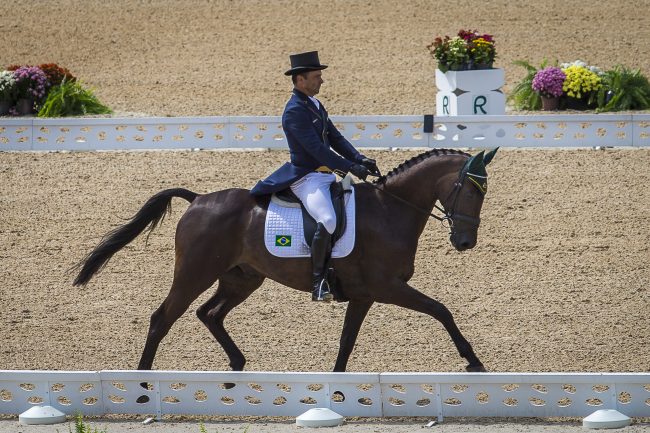
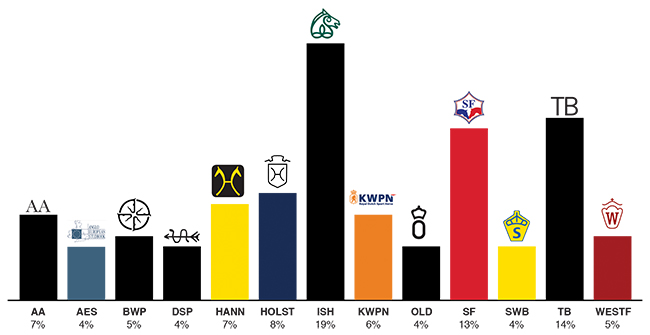
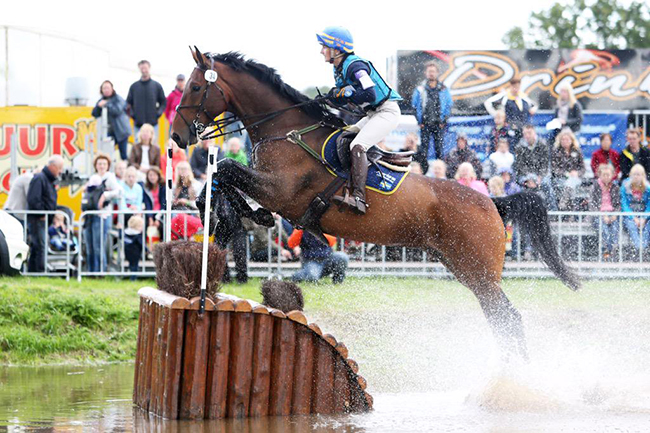
Hard to believe Jumbo as the sire of Allercombe Ellie did not get a mention in this piece. Interesting and comprehensive otherwise, but incomplete…
thanks criss n roz too very good info I’m so looking forward to seeing all the lovely horses I’m sure all are winners and it will be lots good fun for all jane guy , Claremont western Australia 🐎🐎🐎💜